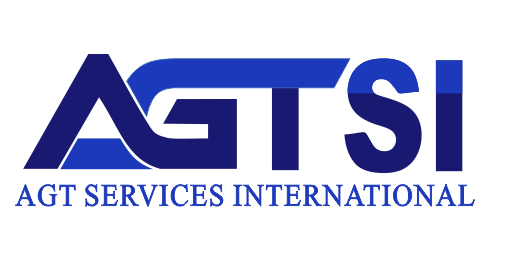Introduction
In the competitive world of business, having a well-structured selection policy is essential to attract and maintain the best talent. A strong selection policy not only helps in finding the right candidates but also ensures a smooth recruitment process. The essentials of a good selection policy include clarity, fairness, and efficiency, which contribute to effective talent acquisition.
Here, we discuss the essential aspects that make a good recruiting system and provide a checklist to help you choose the best one for your organization. Understanding the essentials of a good selection policy will guide you in making informed decisions to enhance your recruitment efforts.
1. Building an Efficient Recruiting System
A good recruiting system is fundamental to implementing an effective selection policy. The essentials of a good selection policy include a recruiting system that can simplify your recruitment process, improve the applicant experience, and support your HR team’s efforts. An ideal system should facilitate smooth communication, enable efficient candidate tracking, and provide insightful data analytics.
A good recruiting system should also integrate well with existing HR tools and platforms to ensure consistent workflow. Moreover, it must be adjustable to evolving hiring needs and trends. Below are ten qualities to look for when choosing a recruiting system, ensuring it Matches the essentials of a good selection policy.
2. Matches with Your Business Requirements
The first step in selecting a good recruiting system is ensuring it fits your business’s specific needs. A complete system should adjust the particular characteristics of the company, whether the business is a small startup or a large corporation. The system needs to be Adjustable, providing flexibility to handle varying volumes of recruitment as your business grows. Additionally, the system should serve industry-specific requirements, offering features that are modified to particular business challenges and needs.
Furthermore, the system should be adaptable to organizational changes and evolving recruitment strategies, ensuring long-term utility and effectiveness. A well-suited recruiting system will match smoothly with your business goals, facilitating smooth and efficient hiring processes.
3. Promotes Team Collaboration and Effective Communication
A strong recruiting system should improve collaboration and communication among all stakeholders involved in the hiring process. The system should facilitate the smooth sharing of candidate information among HR teams, hiring managers, and interviewers, allowing them to provide feedback and make collective decisions efficiently.
Real-time updates and collaborative tools installed within the system can significantly reduce the time to hire by simplifying communication channels and ensuring that all relevant parties are kept informed throughout the recruitment journey.
By encouraging open communication and collaboration, the recruiting system allows an integrated and efficient hiring process, leading to better hiring decisions and improved candidate experiences.
4. Improves Candidate Engagement and Satisfaction
Providing a positive applicant experience is important for attracting top-talent organizations. The recruiting system should prioritize user-friendliness, offering a User-friendly application process that is easy to guide. Clear communication channels and timely updates throughout the recruitment process are essential, keeping applicants informed and engaged.
Advanced features such as automatic responses to accept receipt of applications, simplified interview scheduling tools, and fine communication about the hiring process contribute to making applicants feel valued and respected.
By providing a smooth and fine experience, the recruiting system not only improves applicant satisfaction but also increases employer brand, eventually attracting and maintaining top talent.
5. Connects Social Networking Sites to Recruitment Strategies
Social media acts as a powerful tool for connecting with different and expansive audiences. A useful recruiting system should smoothly blend with major social media platforms, allowing you to smoothly share job openings and engage with future applicants across different channels. This integration goes above just posting abilities, encouraging active relations and communication with possible applicants.
By making use of social media in recruitment strategies matches with the essentials of a good selection policy, organizations can strengthen their reach and effectively tap into inactive applicant pools. The approach allows a bold recruitment approach, providing access to a broader talent pool and improving the overall effectiveness of the selection process.
6. Facilitates Employee Referrals for Talent Acquisition
Employee Suggestions stand out as a highly useful source of quality hires, often resulting in applicants who are well-suited to the company culture and job requirements. A strong recruiting system should prioritize the performance of an employee recommendations program, including features that simplify the recommendation process and track the suggestion’s progress. Here’s how a complete system supports an employee referral program
A. Smooth Referral Process
User-Friendly Interface
The system should offer an easy-to-use interface that allows employees to easily submit referrals without encountering complex procedures.
Automated Tracking
Applying automated tracking tools allows HR teams to observe the status of referrals efficiently, from request to hire.
B. Encouragement of Employee Participation
Incentive Programs
The system can combine encouragement programs to Motivate employees for successful referrals, encouraging active participation and engagement.
Communication Channels
Providing clear communication channels within the system ensures that employees are well-informed about the referral program’s benefits and processes, motivating their involvement.
C. Boosting Morale and Engagement
Distinction and Rewards
Identifying and rewarding employees for successful referrals not only encourages morale but also supports a culture of collaboration and teamwork.
Improved Engagement
Hiring employees in the recruitment process by interviewing their referrals supports their connection to the organization and supports their sense of ownership.
By prioritizing the integration of an employee referral program within the recruiting system and applying qualities that support its smooth operation, organizations can Utilize the power of employee networks to identify top talent while simultaneously improving employee morale and attention.
7. Conducts Advanced Search Capabilities
Efficient search functionality is essential for Quickly identifying the most suitable applicants for empty positions. A complete recruiting system should provide a collection of advanced search options, authorizing recruiters to filter applicants based on a range of criteria such as skills, experience, education, certifications, and more.
A. Empowering Recruiters with Customizable Filters
The Complex search ability allows recruiters to exactly pinpoint applicants who match the specific requirements of the job role, simplifying the applicant selection process. Additionally, the system should support Boolean search operators and offer customizable filters to further purify search results, ensuring accuracy and applicability.
B. Simplifying Candidate Selection Process
By Utilizing these powerful search functionalities, recruiters can Advance the candidate sourcing process and efficiently identify top talent that best fits the organization’s needs.
8. Smooth Compatibility with Your Company’s Website and HR Systems
Compatibility with your existing systems is essential for a smooth recruitment process. The recruiting system should integrate smoothly with your website, applicant tracking system (ATS), HR management system (HRMS), and other tools. This ensures a unified workflow and easy access to all recruitment-related data.
A. Seamless Integration with Your Company’s Website and ATS
Compatibility with your existing systems is essential for a smooth recruitment process. The recruiting system should smoothly integrate with your company’s website, ensuring that job postings are automatically updated and Coordinated across platforms. Additionally, integration with your applicant tracking system (ATS) allows recruiters to efficiently manage applicant profiles, applications, and communications in one Collective location.
B. Efficient Integration with HR Management Systems (HRMS) and Other Tools
In addition to ATS integration, the recruiting system should also smoothly integrate with the HR management system (HRMS) and other essential tools used in the organization’s recruitment process. The integration helps a proper workflow by allowing recruiters to access all recruitment-related data from a single interface.
Furthermore, integration with HRMS allows smooth transfer of candidate information, simplifying the onboarding process and ensuring a constant employee experience. By ensuring compatibility with the organization’s website, ATS, HRMS, and other tools, the recruiting system encourages efficiency, clarity, and collaboration throughout the recruitment life cycle.
This suitable approach not only simplifies organizational tasks but also improves the overall applicant experience and improves recruitment results.
9. Simplifying Recruitment Processes Through Automation
Automation plays a key role in improving efficiency within your recruitment process, matching with the essentials of a good selection policy. A strong recruiting system should include automation to simplify repetitive tasks, including job postings, resume screening, interview scheduling, and follow-up communications. By automating these routine activities, the HR team can devote more time and attention to strategic initiatives such as engaging with top applicants and purifying recruitment strategies.
A. Automated Job Postings and Resume Screening
With automated job postings, the recruiting system can quickly share job openings across different channels, reaching a wider pool of possible applicants. Additionally, automated resume screening tools can efficiently filter through incoming applications, identifying suitable candidates based on set criteria and keywords. Resume screening accelerates the initial screening process, allowing recruiters to focus their efforts on estimating the most favorable applicants.
B. Streamlined Interview Scheduling and Follow-Up Communications
Automation also simplifies the interview scheduling process by offering self-service scheduling tools that allow applicants to choose interview places based on availability. Moreover, automated follow-up communications, such as exposure emails and status updates, provide timely and constant communication with applicants throughout the recruitment journey. By automating these organizational tasks, recruiters can improve the applicant experience and maintain a high level of concentration.
10. Smooth Data Migration Processes
Transitioning to a new recruiting system should be smooth, providing that all candidate data, job postings, and communications are transferred effortlessly. This process minimizes downtime and maintains continuity in recruitment efforts, matching closely with the principles of a well-structured selection policy. By prioritizing smooth data migration, organizations can smoothly transition to a new system without disturbing their recruitment operations.
11. Empowers Informed Decision-Making with Data Analytics
Improving the recruitment process through informed decision-making is essential for organizational success. A developed recruiting system should offer complete analytics and reporting functionalities, empowering exploration of crucial metrics such as time-to-hire, cost-per-hire, and source of hire.
By Utilizing these analytical understandings, you can gain valuable viewpoints on recruitment operations, identify areas for improvement, and purify selection policy accordingly. This data-driven approach allows continuous improvement, allowing optimize recruitment strategies, improve applicant experiences, and finally secure top talent for your organization.
Essentials of a Good Selection Policy: Final Thought
Selecting the right recruiting system holds major importance in choosing a strong selection policy. Prioritizing key factors such as matching with business conditions, optimizing applicant experience, and utilizing data-driven understandings allows the simplifying of recruitment processes and the attraction of top-tier talent. It’s urgent to recognize that preparing a useful selection policy is a repetitive process, demanding continuous evaluation and transformation to succeed in an active job market.



















